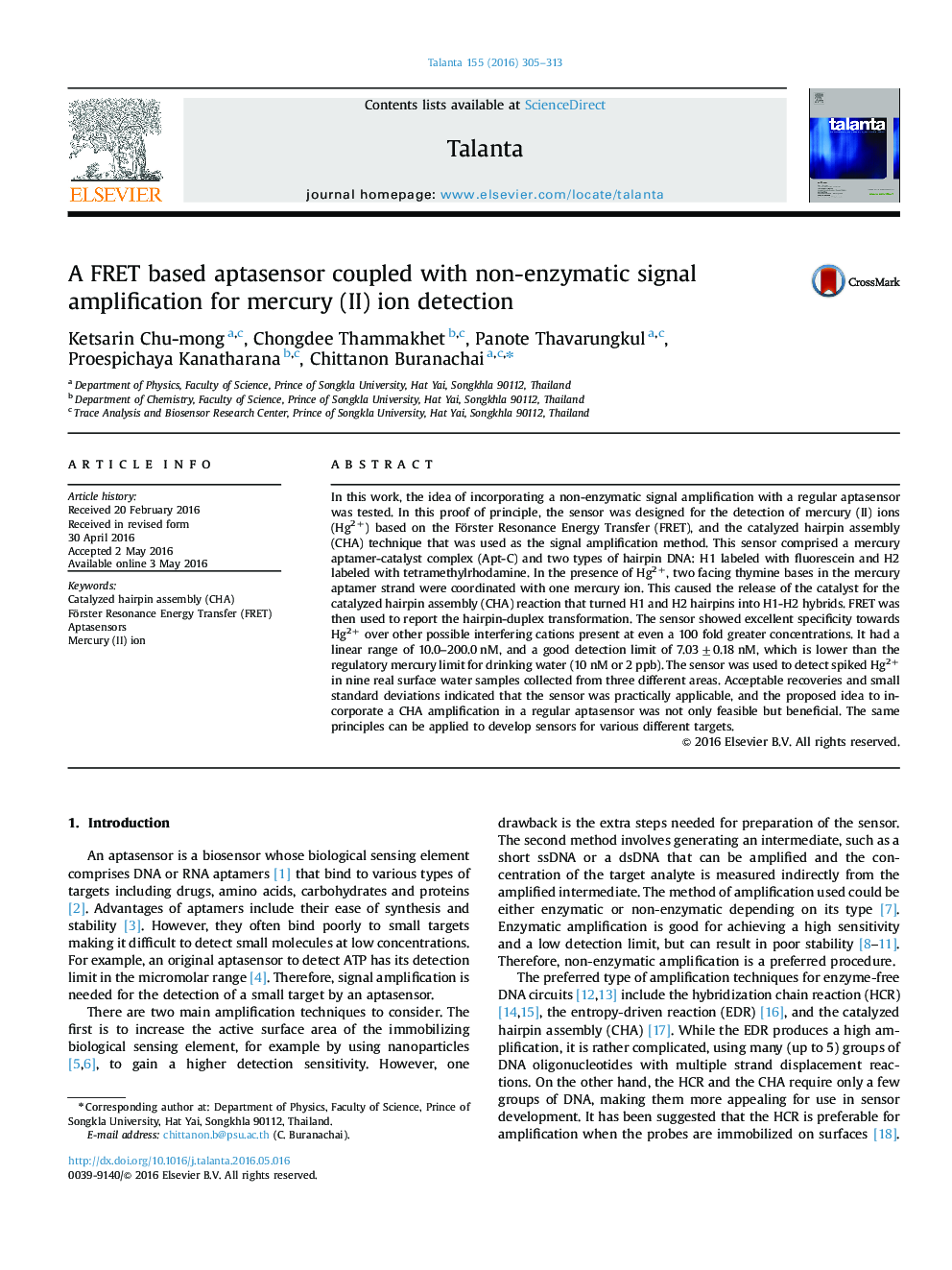| کد مقاله | کد نشریه | سال انتشار | مقاله انگلیسی | نسخه تمام متن |
|---|---|---|---|---|
| 1242444 | 1495780 | 2016 | 9 صفحه PDF | دانلود رایگان |

• Catalyzed hairpin assembly is used beyond detection of just a target DNA.
• The sensor can detect Hg2+ in water with LOD below the MCL set by US EPA.
• Because of FRET, the sensor is free from matrix effect in real water samples.
• Since the sensor is modular, it may be modified to detect various types of targets.
In this work, the idea of incorporating a non-enzymatic signal amplification with a regular aptasensor was tested. In this proof of principle, the sensor was designed for the detection of mercury (II) ions (Hg2+) based on the Förster Resonance Energy Transfer (FRET), and the catalyzed hairpin assembly (CHA) technique that was used as the signal amplification method. This sensor comprised a mercury aptamer-catalyst complex (Apt-C) and two types of hairpin DNA: H1 labeled with fluorescein and H2 labeled with tetramethylrhodamine. In the presence of Hg2+, two facing thymine bases in the mercury aptamer strand were coordinated with one mercury ion. This caused the release of the catalyst for the catalyzed hairpin assembly (CHA) reaction that turned H1 and H2 hairpins into H1-H2 hybrids. FRET was then used to report the hairpin-duplex transformation. The sensor showed excellent specificity towards Hg2+ over other possible interfering cations present at even a 100 fold greater concentrations. It had a linear range of 10.0–200.0 nM, and a good detection limit of 7.03±0.18 nM, which is lower than the regulatory mercury limit for drinking water (10 nM or 2 ppb). The sensor was used to detect spiked Hg2+ in nine real surface water samples collected from three different areas. Acceptable recoveries and small standard deviations indicated that the sensor was practically applicable, and the proposed idea to incorporate a CHA amplification in a regular aptasensor was not only feasible but beneficial. The same principles can be applied to develop sensors for various different targets.
Figure optionsDownload as PowerPoint slide
Journal: Talanta - Volume 155, 1 August 2016, Pages 305–313